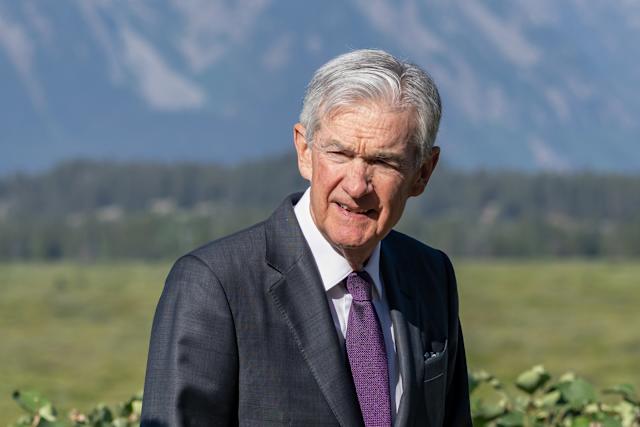Impacts from the prospect of Fed rate cuts
At Jackson Hole, Fed Chair Powell signaled a possible interest rate cut at the U.S. central bank's meeting next month.

At Jackson Hole, Fed Chair Powell signaled a possible interest rate cut at the U.S. central bank's meeting next month.
All eyes were on Fed Chair Powell at Jackson Hole economic symposium last week as markets try to ascertain whether the bank will cut rates as soon as next month. At this meeting, Fed Chair Powell signaled a possible interest rate cut at the U.S. central bank's meeting next month, saying that risks to the job market were rising but also noting inflation remained a threat and that a decision wasn't set in stone.
The US dollar presumably fell after Powell hinted at rate cuts. That’s because the market is accustomed to a positive correlation between rates and currencies. But Steven Barrow, Head of Standard Bank G10 Strategy believes that there are reasons to believe that this is wrong.
FX is often represented as a simple numbers game. If one number (the domestic interest rate) is expected to rise relative to another number (the foreign interest rate), the domestic currency is usually expected to appreciate. Of course, things are a lot more complicated than this, but it still seems to work even if the uncovered interest parity theory suggests it should not.
For instance, the Bloomberg index of the carry-trade performance of eight high-yielding emerging market currencies shows a cumulative return of around 250% since inception in 1999 if the trade were funded out of the dollar. Even within the G10 currencies, where rate spreads are usually much narrower, a carry trade that holds a basket of the three highest-yielding currencies, against the three lowest yielding currencies still returns over 200% in the past 25 years.
So, it is not surprising that the FX market hangs on every word that Fed Chair Powell has to say about rates – as we will see again today. But what has been correct in the past might not in the future. Take this year, for instance. The Federal Reserve has refused to cut rates while virtually every other G10 central bank has lowered borrowing costs. This should have lifted the dollar according to the past relationship between rates and currencies but, in fact, the US dollar has fallen, and fallen quite sharply. Why has this happened?
Steven Barrow thinks it is because equities have forced their way into a position where they are the greater driving force for currency volatility, not rates. Now this might not be the case for all currencies, but he thinks it is for the US dollar by virtue of the fact that the extraordinary rise in US equities in recent years has pushed foreign holdings of US stocks above those of debt instruments. This crossover occurred in 2024.
Previously, foreign holdings of US debt had exceeded equity holdings by a considerable distance. At the time of the financial crisis in 2008 foreign holdings of US debt were nearly four times those of stocks, but today the most recent Federal Reserve data shows that overseas equity holdings of USD16tr are above the USD15.2tr of debt held by overseas investors. Clearly the vast bulk of this equity rise reflects valuation effects more than new inflows but that does not necessarily matter because these holdings have to be hedged, or not, as investors decide, and that can move the dollar. This year they seem to have decided to hedge more US equity-related currency exposure as global stocks have outperformed the US by some distance.
If it is the case that equity flows, or at least the currency hedging of stock holdings, are now more important than debt flows, it rather changes the relationship between rates and the dollar. For while the ‘old’ theory might have been that expectations of lower US rates, perhaps prompted by Fed comments from Powell and others, should lead to a lower dollar over time. The ‘new’ reality might be that lower rates could aid the US dollar if, and it is a big if, these expectations prompt stronger US stocks or, more importantly, stronger US stocks relative to other equity markets. But again, many analysts rather doubt that the story is as simple as this.
For a start, issues of stock valuation are likely to be at play as well. If investors believe that US stocks are excessively expensive, or perhaps too reliant on AI-related firms, we might find that even the prospect of Fed rate cuts leaves overseas investors reticent to add more equity, or to leave their dollar exposure to equities uncovered. In this case equity domination of the dollar’s movements can still imply a weaker greenback, and that’s exactly what we think will happen.








